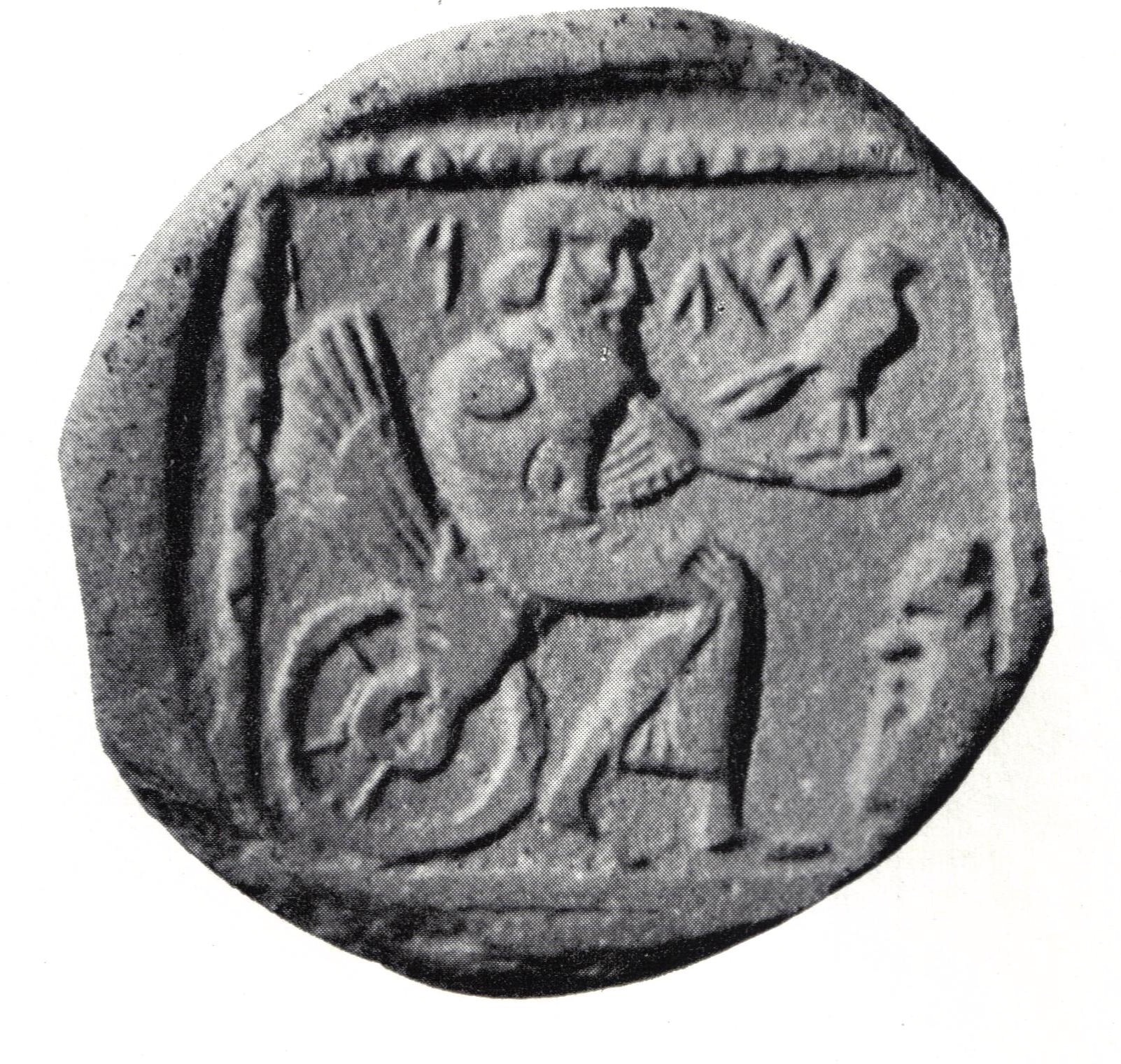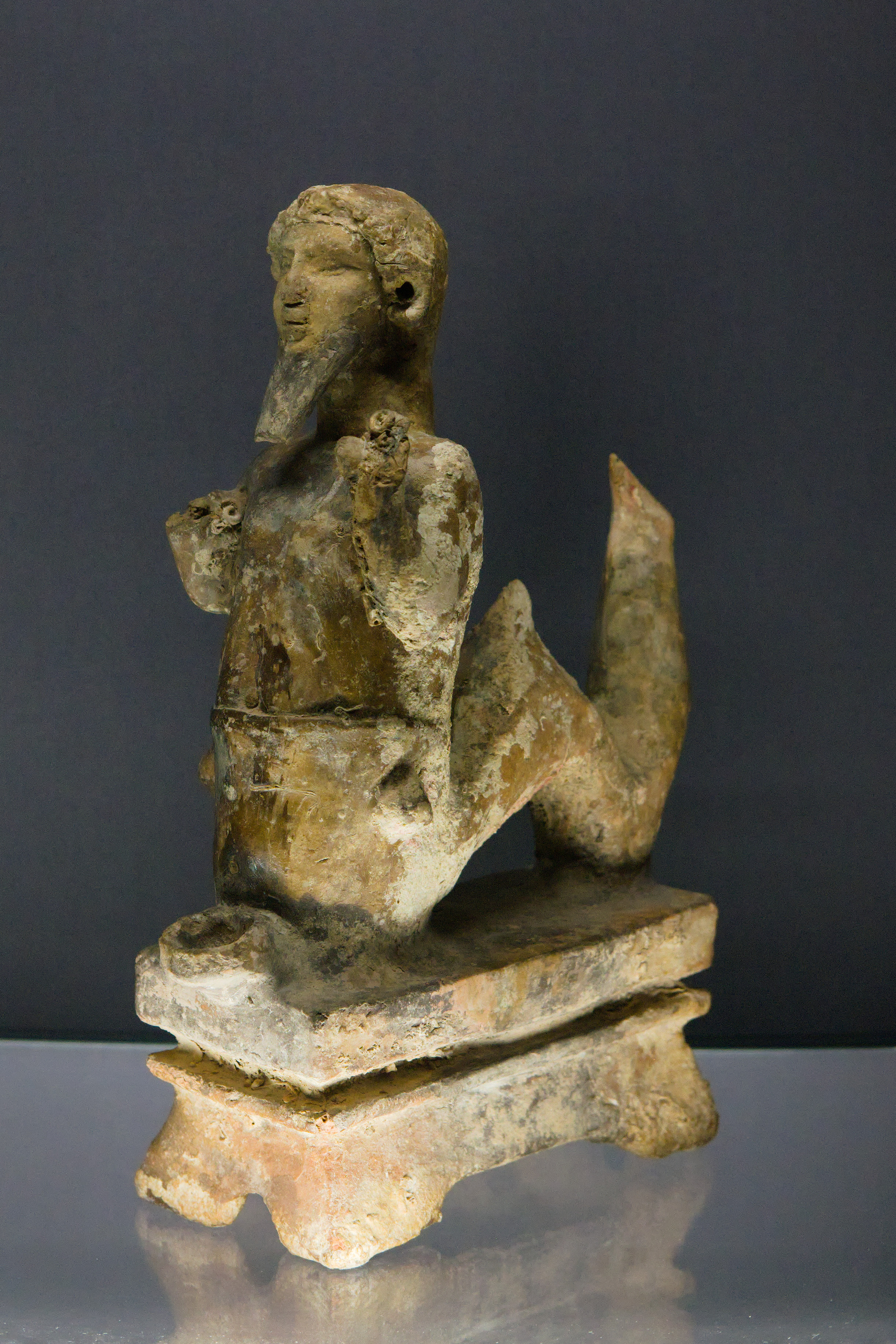Let there be God: How Yahweh became “God Almighty”

- Yahweh worship can be traced back all the way to the ancient religion of Canaan.
- In the northwestern Semitic language spoken there, “El” had multiple meanings: It was the word for “god,” the name of a specific god, and the title of a god who stood removed from other, lesser gods. These lesser gods included Yahweh, who was assigned the land of Israel.
- In time, the Israelites referred to Yahweh as El Shaddai — “God Almighty.”
According to the Book of Exodus, which is part of the Torah and the Old Testament of the Christian Bible, Moses was the first person to whom the God of Abraham revealed his name. In the original texts, this divine name was written YHWH. Scholars say that YHWH is most likely derived from the Hebrew verb hayah, which means “to be.” This is fitting, considering that God’s initial response to Moses was, “I am who I am.”
In reality, the name YHWH — commonly written as Yahweh — already existed before Moses, who is believed to have lived during the 13th century BCE. This inference is based not only on archaeological evidence, but also on the Scriptures themselves. The name Yahweh, after all, can be found in the Book of Genesis. In that same book, we are also told that people started to call upon Yahweh’s name as early as the time of Enosh, who lived long before Moses.
This begs the question: Where (and when) did worship of Yahweh first originate? It is not an easy question to answer. Theology professor Lowell K. Handy, author of Among the Host of Heaven: The Syro-Palestinian Pantheon as Bureaucracy, says you should not even bother; most religious traditions go back so far in time that any information about them becomes so fragmented as to be virtually non-existent.
A good deal of studies available on the subject also suffer from confirmation bias, with authors bending over backward in an effort to connect the origins of the Abrahamic religions to their own cultural, ethnic, or religious backgrounds. Some believers might claim that studying the “birth” of God as a social construct is itself an act of blasphemy. But much of the time, however, such studies come from a place of interest rather than disbelief.
The origins of Yahweh worship
The first historical document pointing toward the existence of Yahweh worship is an Egyptian inscription that dates to the rule of pharaoh Amenhotep III, who lived around the same time as the prophet Moses. The inscription contains the phrase “Shasu of Yhw.” The Shasu were a nomadic tribe who lived in northern Arabia. Yhw, meanwhile, was the name of a place located somewhere in that region.

The Dutch historian of religion Cornelis Tiele, who studied the Shasu, proposed that worship of Yahweh did not originate in the land of Canaan, as described in the Bible, but was adopted by the proto-Israelites through sustained contact with inhabitants of the Arabian Peninsula. His hypothesis is not just supported by archaeological evidence. In Exodus, Yahweh reveals himself to Moses while the latter is in the company of the nomadic Kenites.
The Kenite hypothesis, as Tiele’s proposition is now known, became widely accepted by religious scholars of the late 19th and 20th centuries, including the Egyptologist Eduard Meyer (author of The Origins of Judaism) and the theologian Hugo Gressmann (who researched the historicity of the Ten Commandments). In 2008, the late Joseph Blenkinsopp, professor of Biblical Studies at Notre Dame, said Tiele’s hypothesis “provides the best explanation currently available.”
One god among many
Yahweh worship also has its roots in an ancient religion of Canaan, the land which God promised to Abraham. Within this polytheistic religion, Yahweh was but one of many deities united under a figure known as El. In the northwestern Semitic language spoken in Canaan, “El” had multiple meanings: It was the word for “god,” the name of a specific god, and the title of a god who stood removed from other, lesser gods.
These lesser gods included Yahweh, Asherah (El’s consort as well as the religion’s chief mother goddess), and Baal, whose worshippers went on to challenge Yahweh’s supremacy in Israel. Yahweh and Baal were merely two of El’s 70 children. According to the mythology, each child of El was given a region to look after. Baal ruled over Canaan while Yahweh, fatefully, was assigned the land of Israel.
Like ancient Near Eastern myths from the same period, the earliest Biblical literature describes Yahweh as possessing particular as opposed to general attributes. He is represented as a storm god who marches into battle alongside stars and planets to defend Israel from enemies. This warrior-like iteration of Yahweh may explain the brutal and volatile behavior he exhibits in the Old Testament, which is a far cry from the omnibenevolent deity we find in Christ.
From polytheism to monotheism
When nation-states first emerged in the Levant during the late Iron Age, El’s vassals were promoted in their respective mythological hierarchies. Chemosh came to occupy an important role in the kingdom of Moab, because Moab had originally been assigned to him by El. The same thing happened to Milcom and Quas, who were gods of the Ammonites and Edomites, respectively. Yahweh, as mentioned, became the chief god of Israel.

Yahweh’s supremacy in Israel did not go uncontested. When the Israeli king Ahab married the Lebanese princess Jezebel in the 8th century BCE, Yahwist priests were fiercely persecuted while Yahweh himself was replaced by Baal and Asherah. Ultimately, however, faith in Yahweh proved too entrenched to erase: Ahab’s dynasty was deposed and Jezebel died by defenestration — that is, being thrown out of a window.
Yahweh worship bounced back stronger than ever. Their power restored, priests officially condemned the veneration of other, false gods. Idols of Baal and Asherah were destroyed. In time, their qualities were assimilated into Yahweh, who came to be referred to as El Shaddai: a title which roughly translates into English as “God Almighty.”





